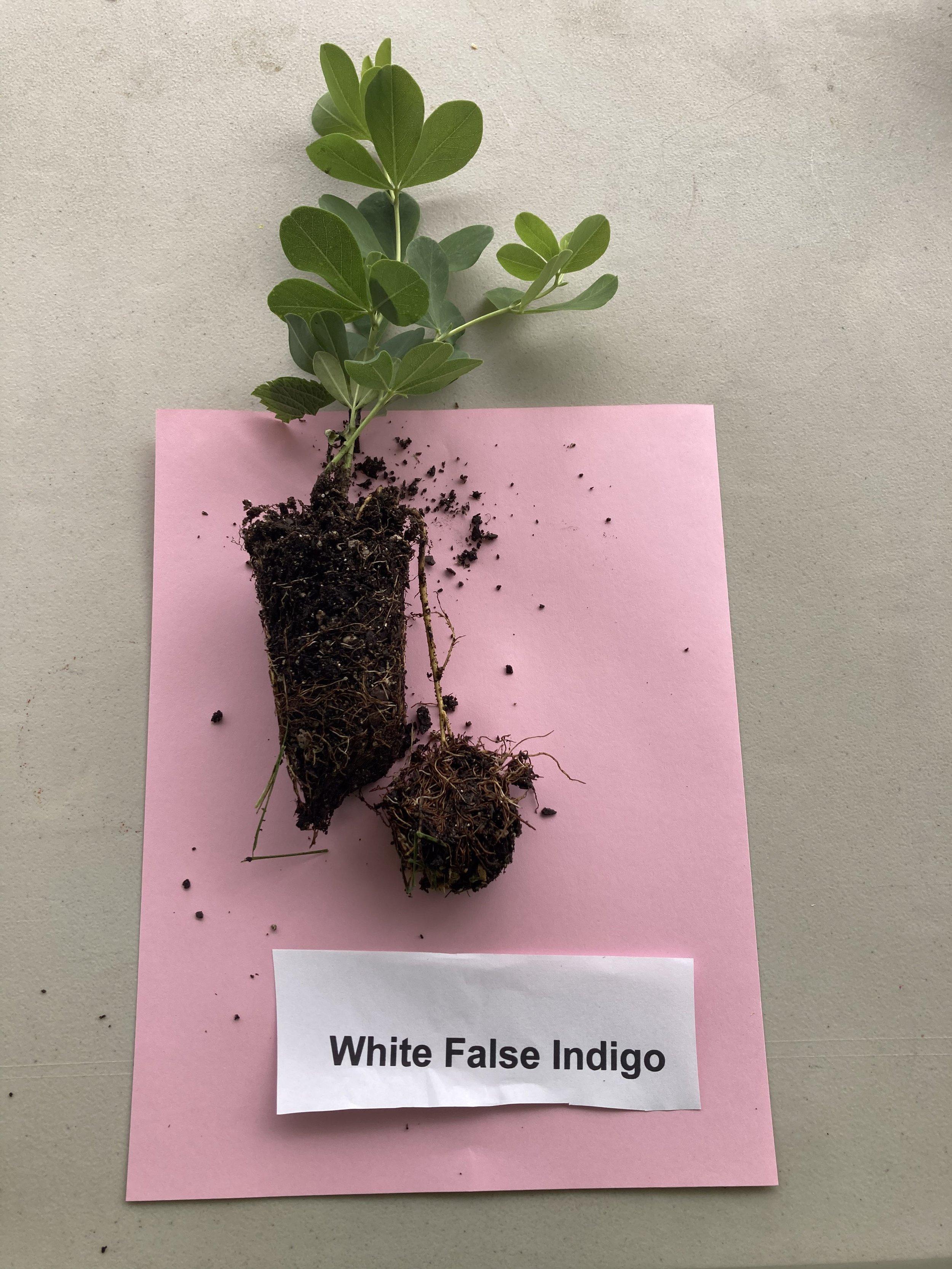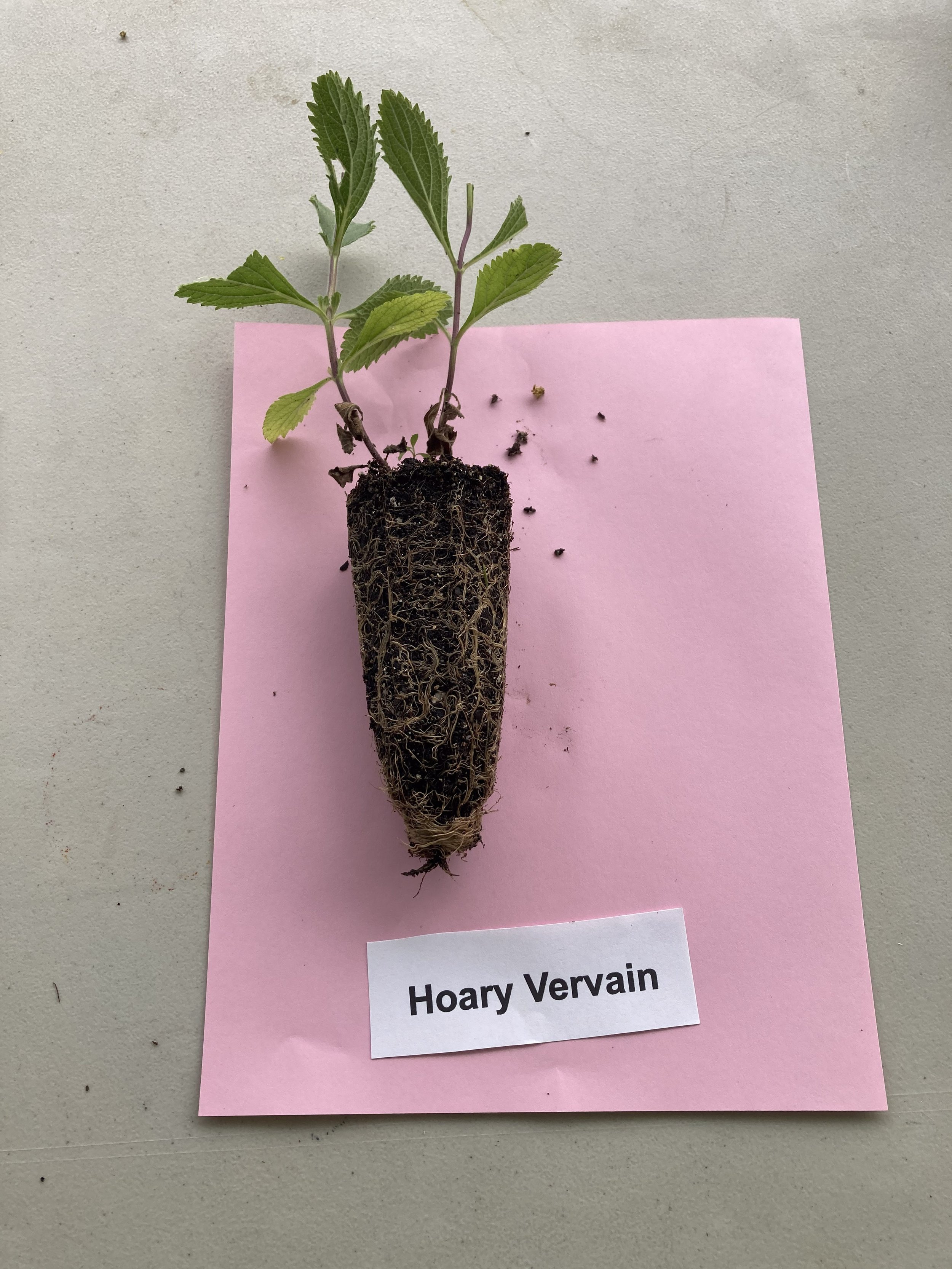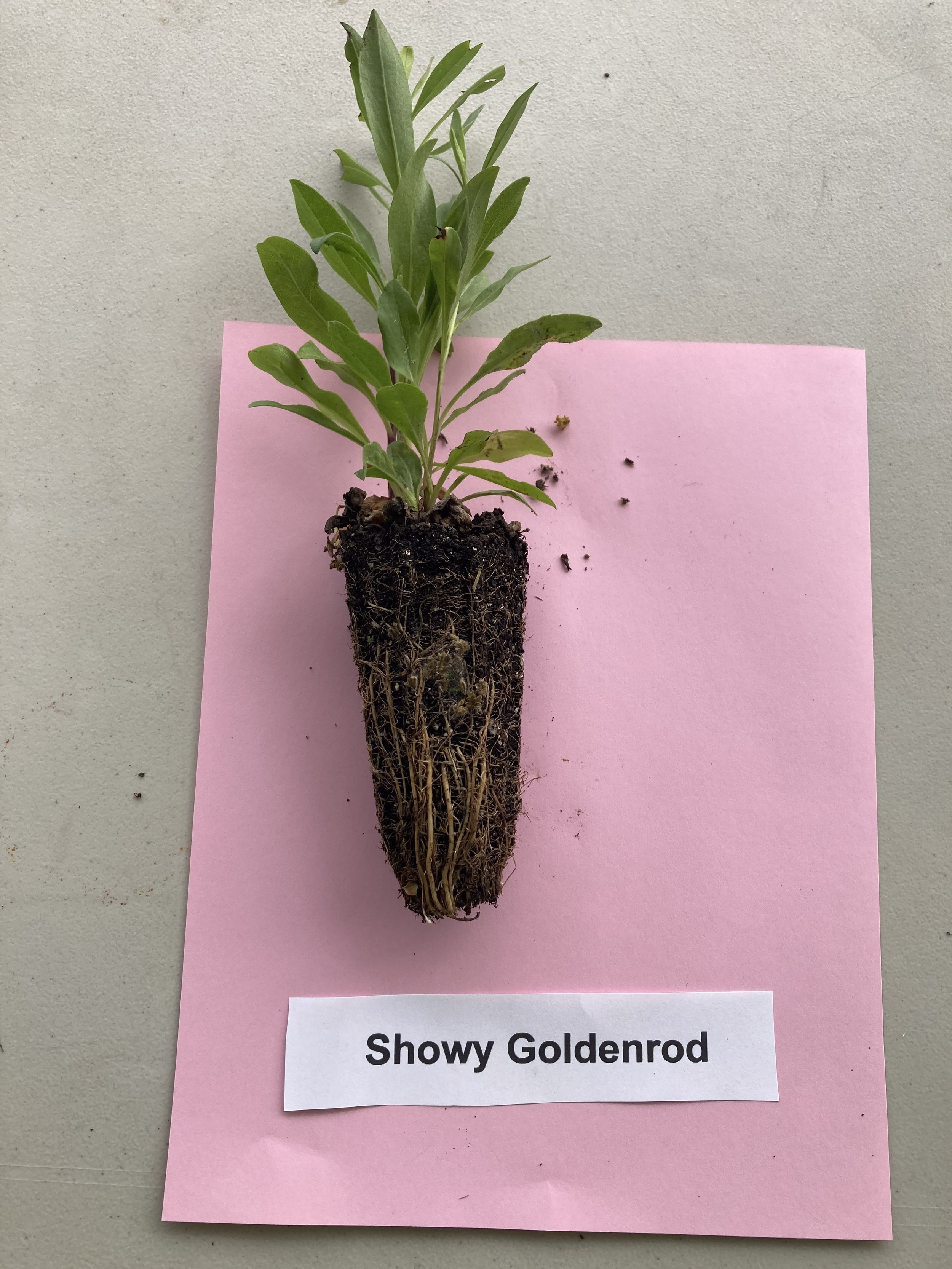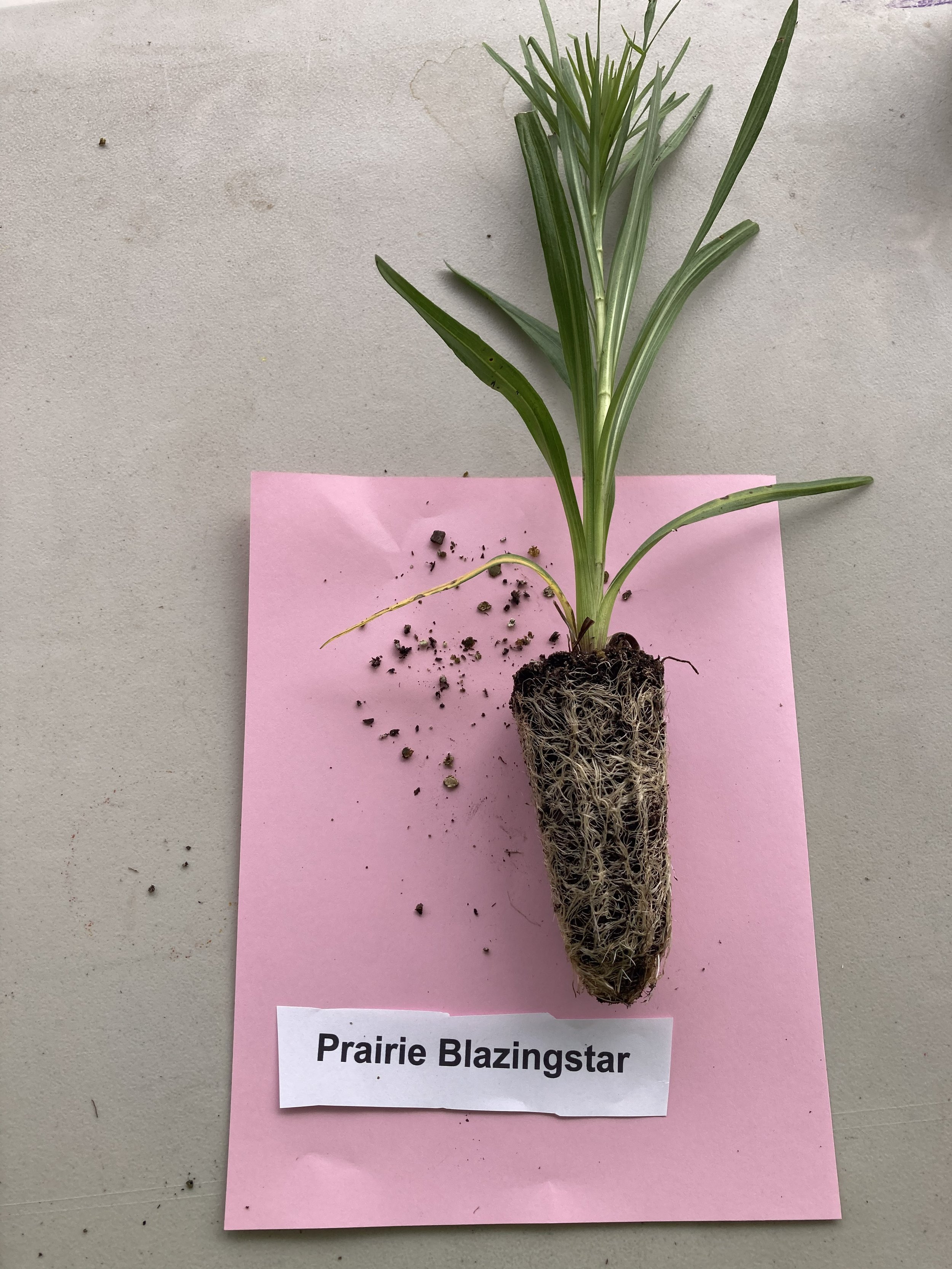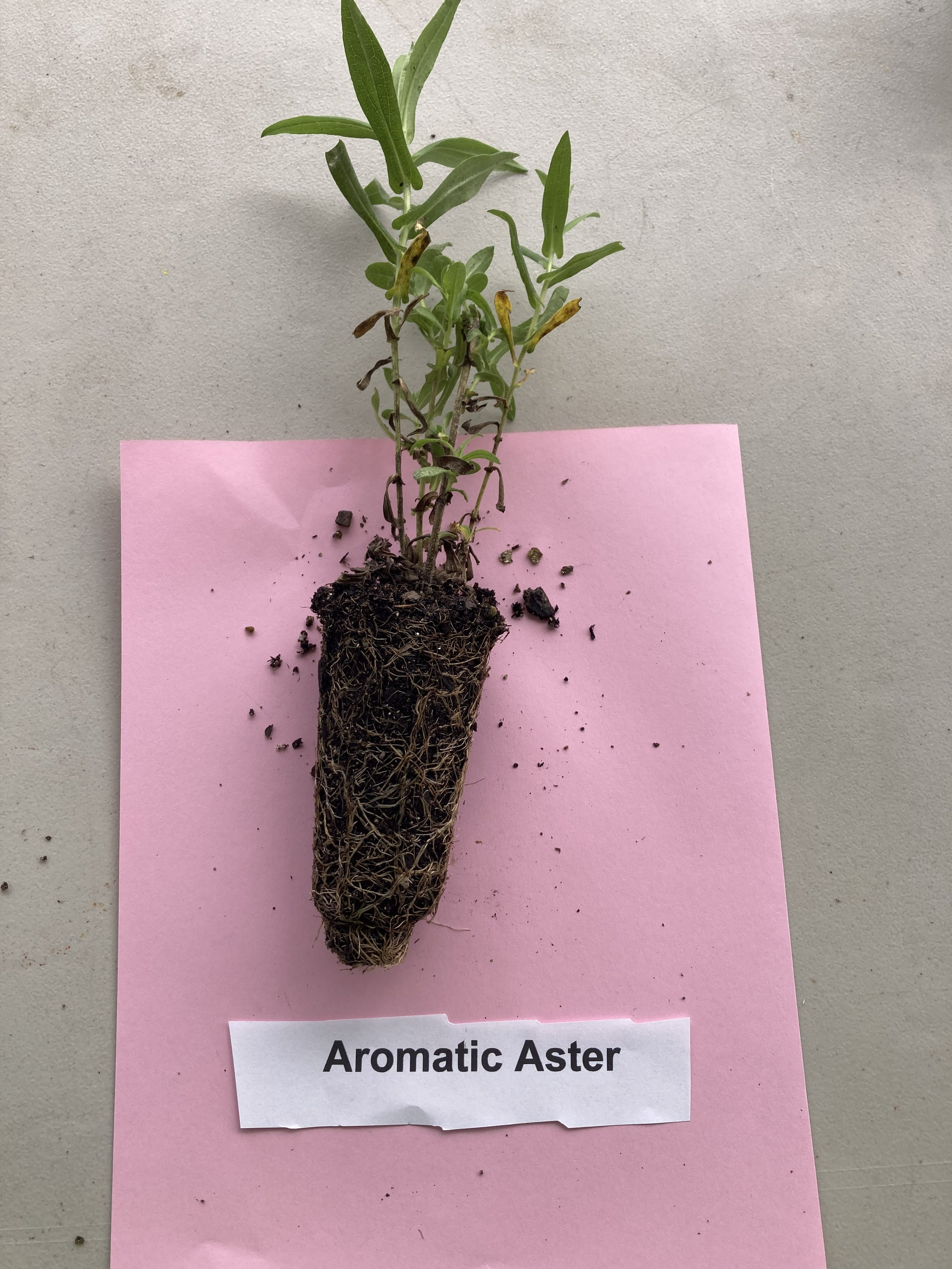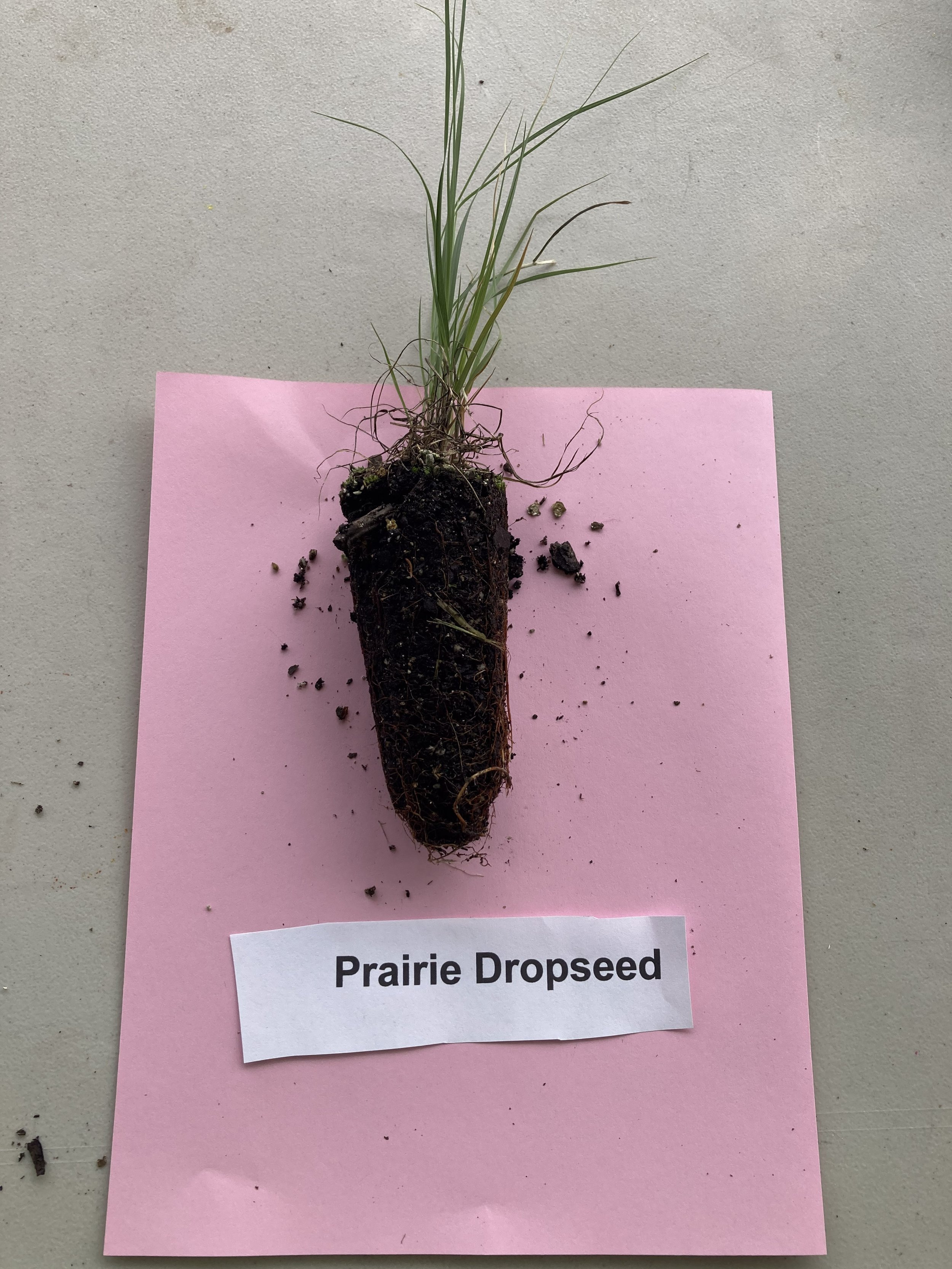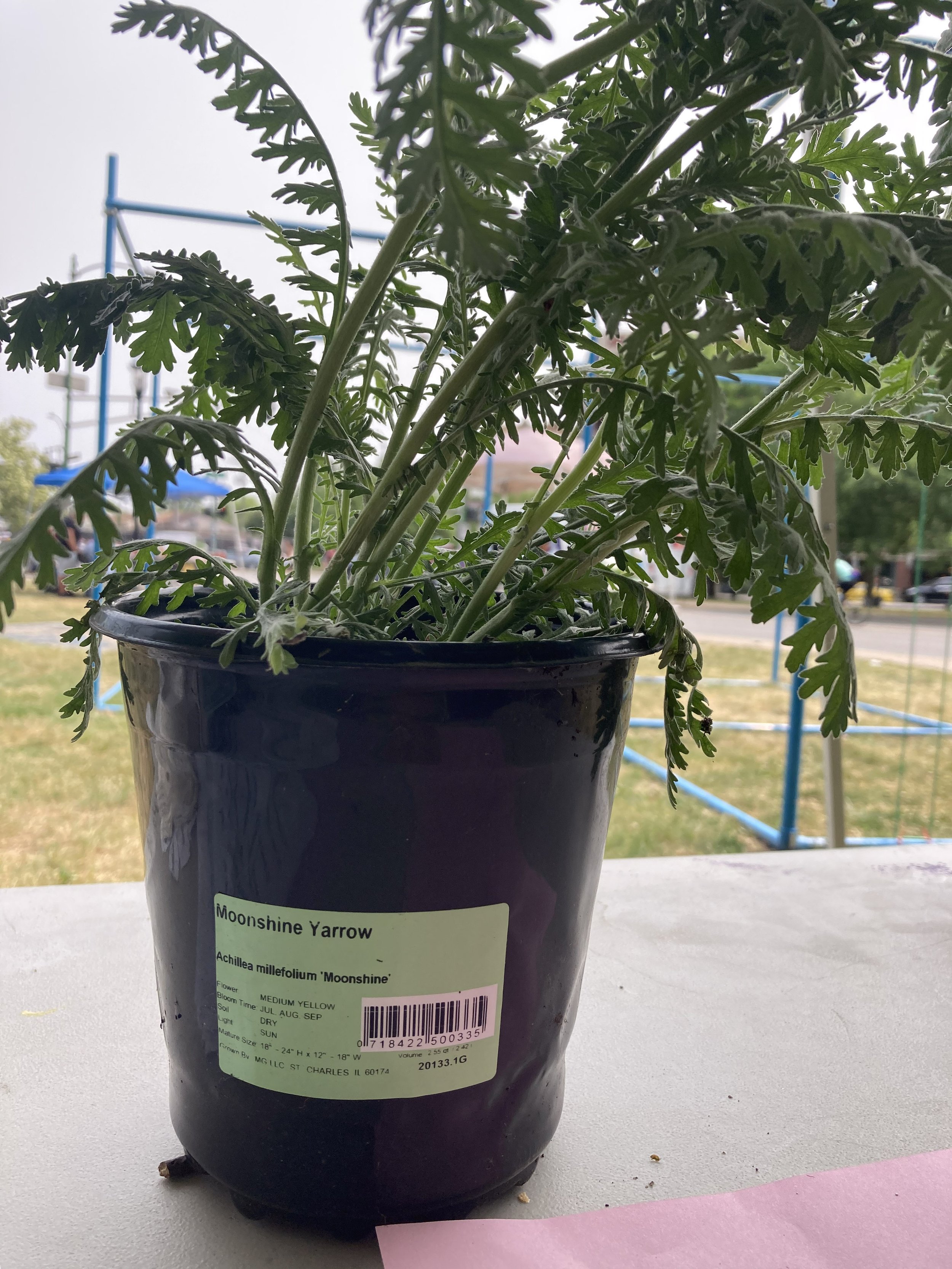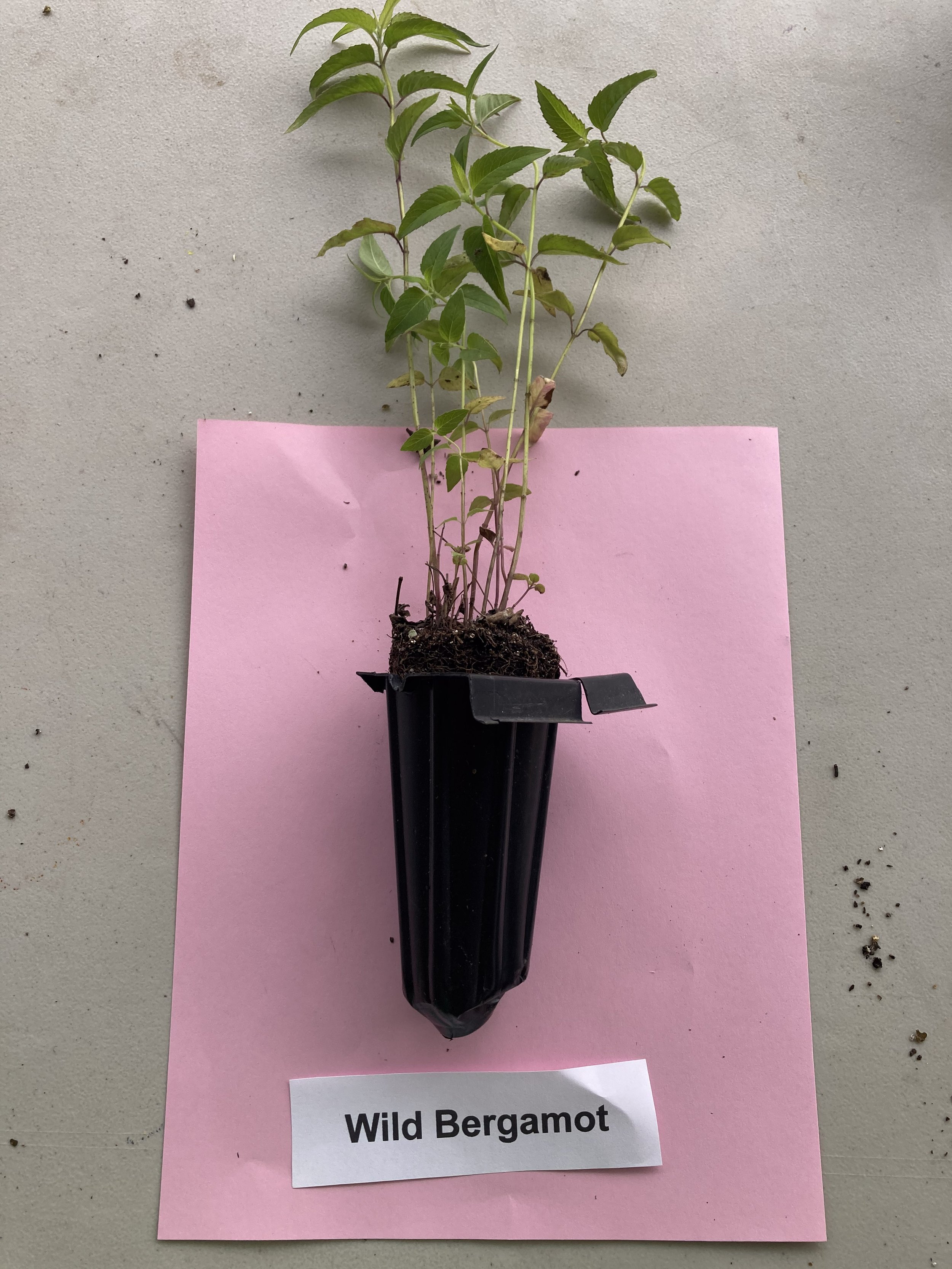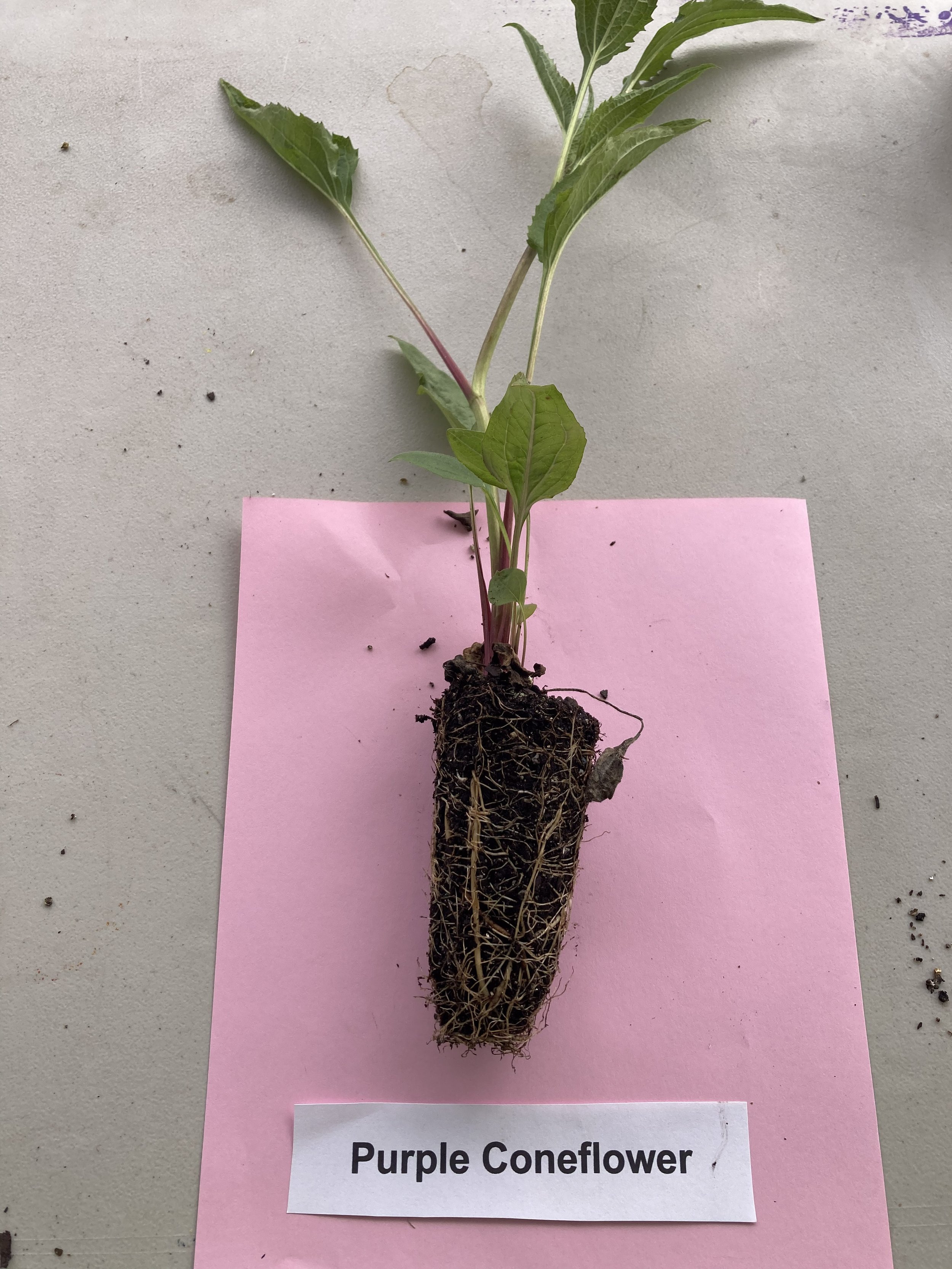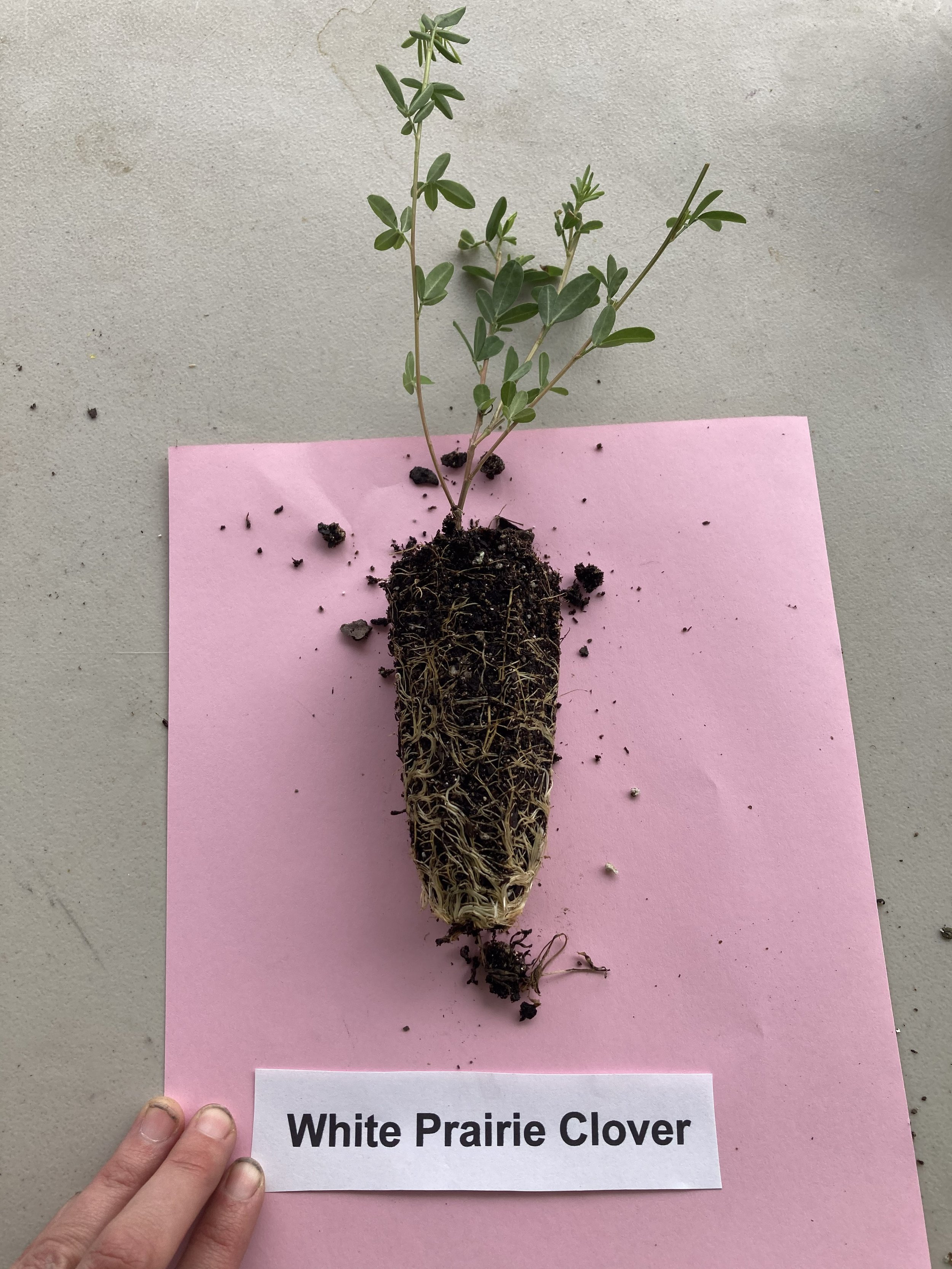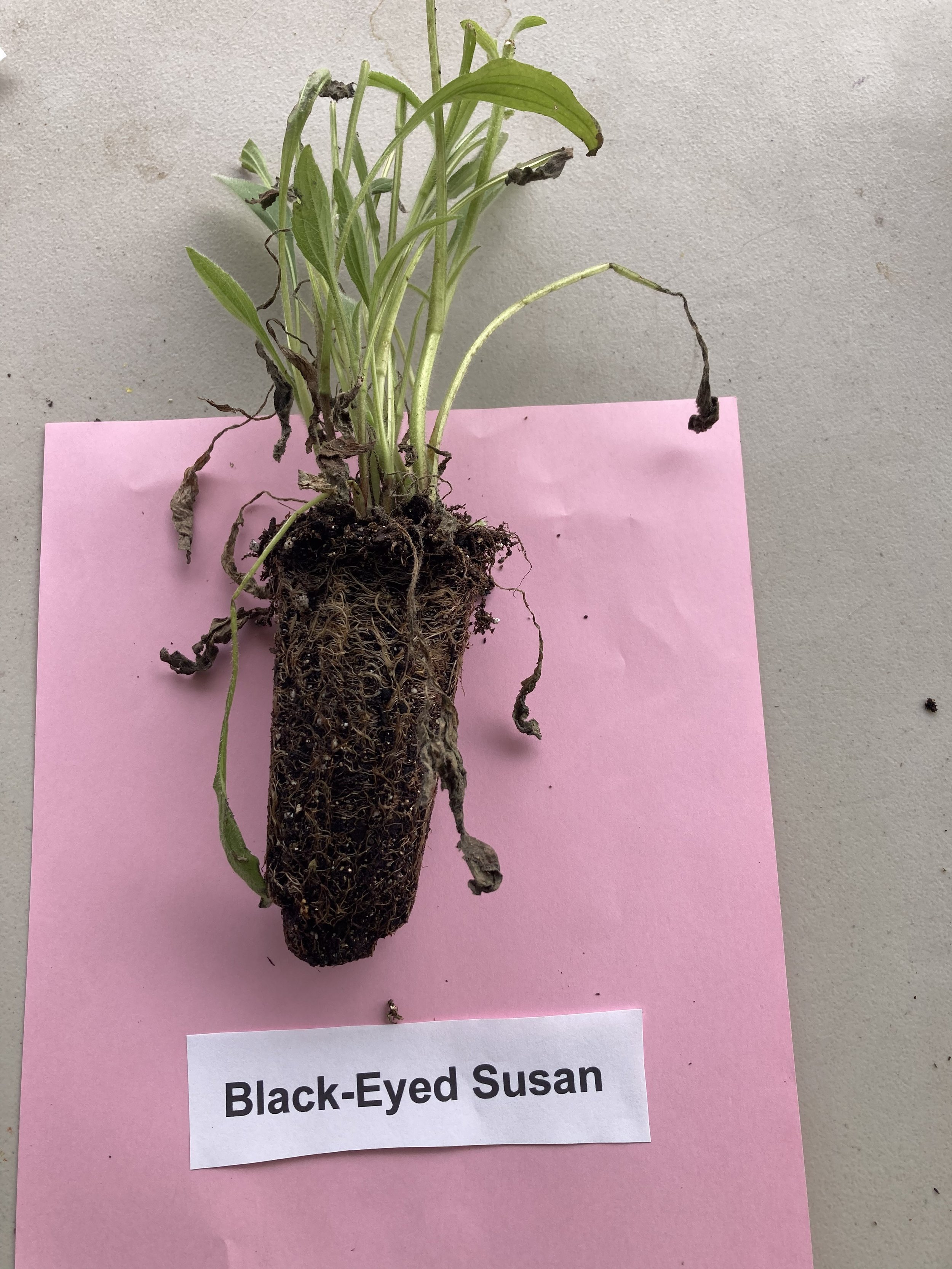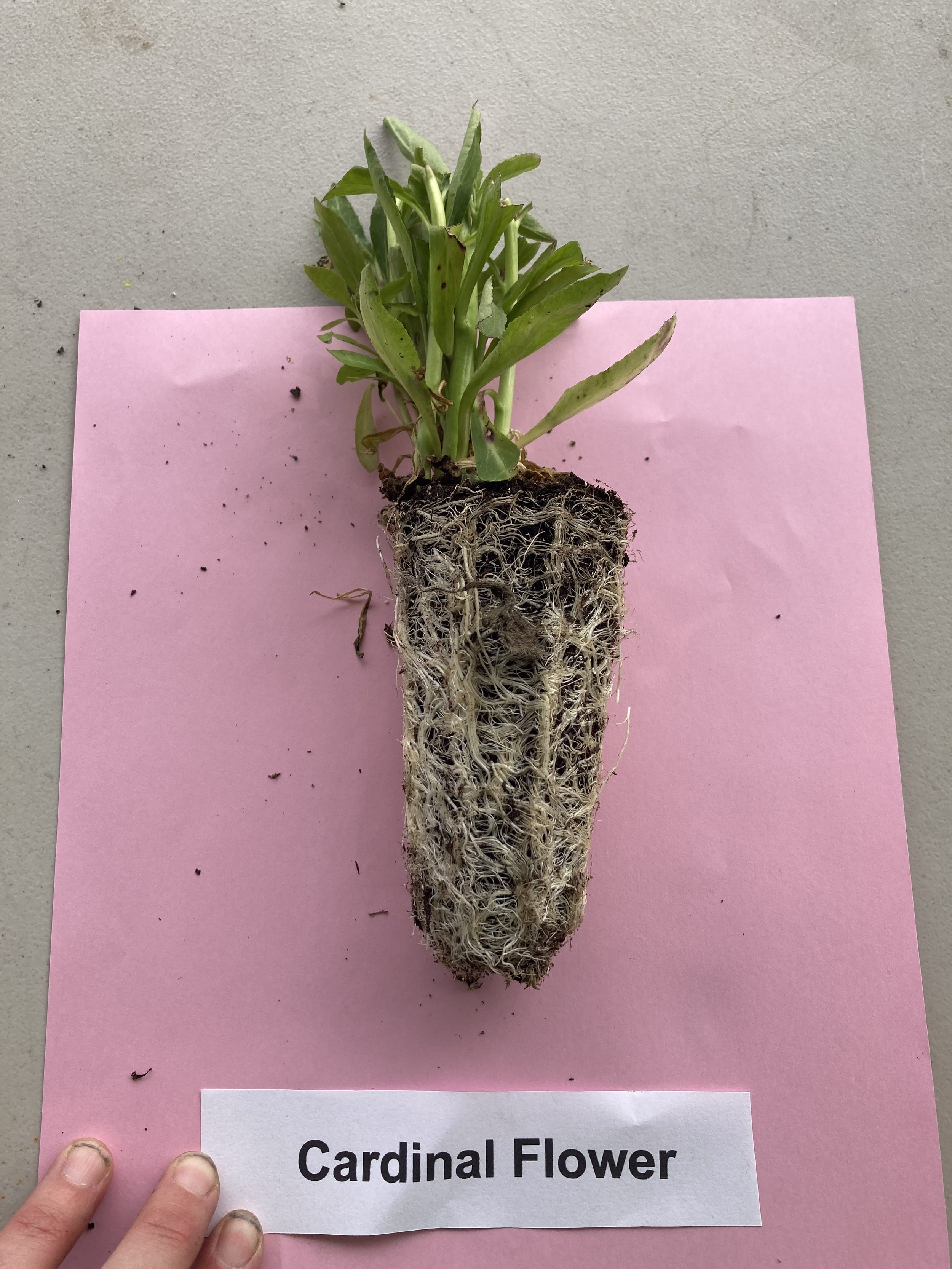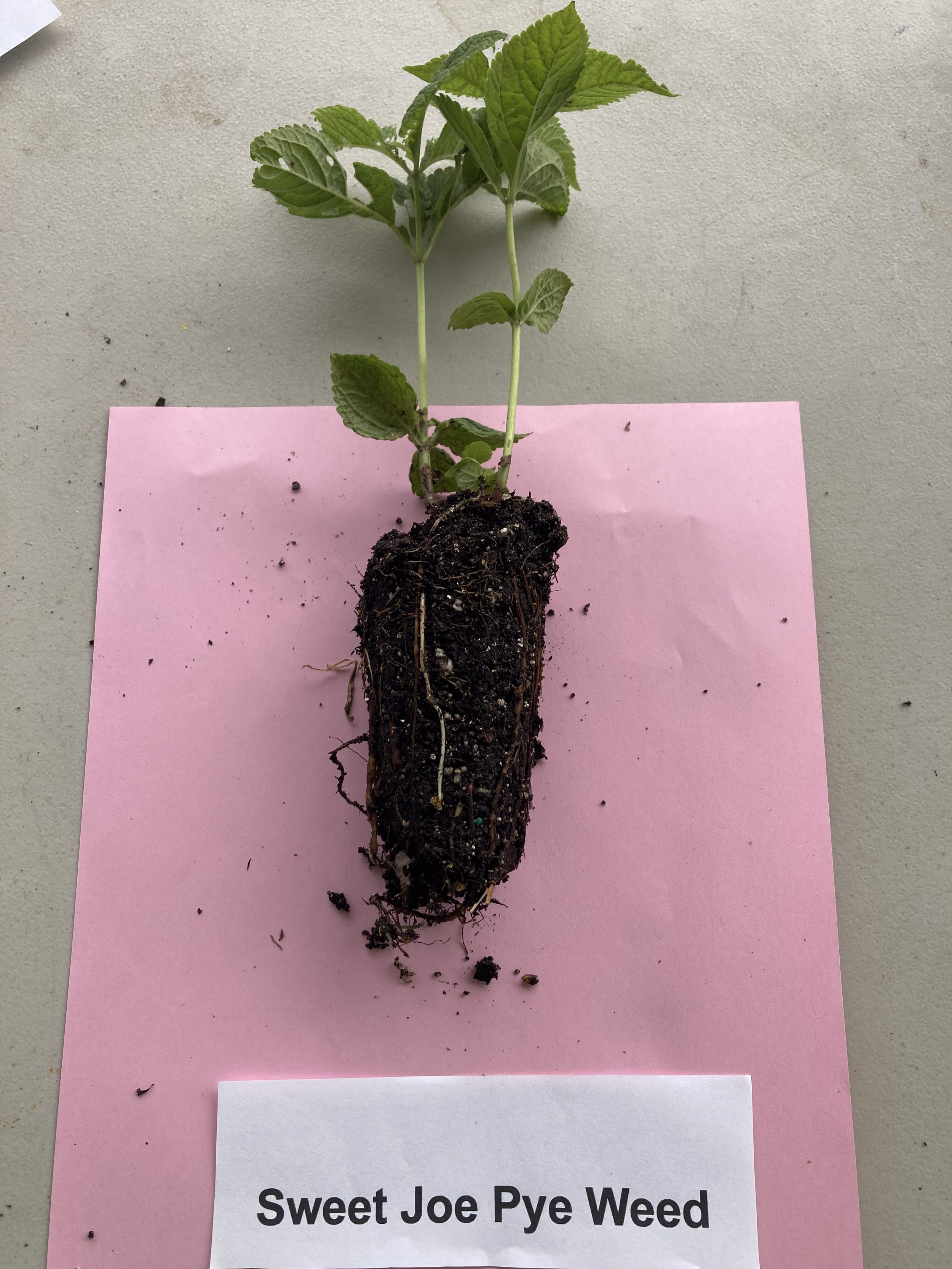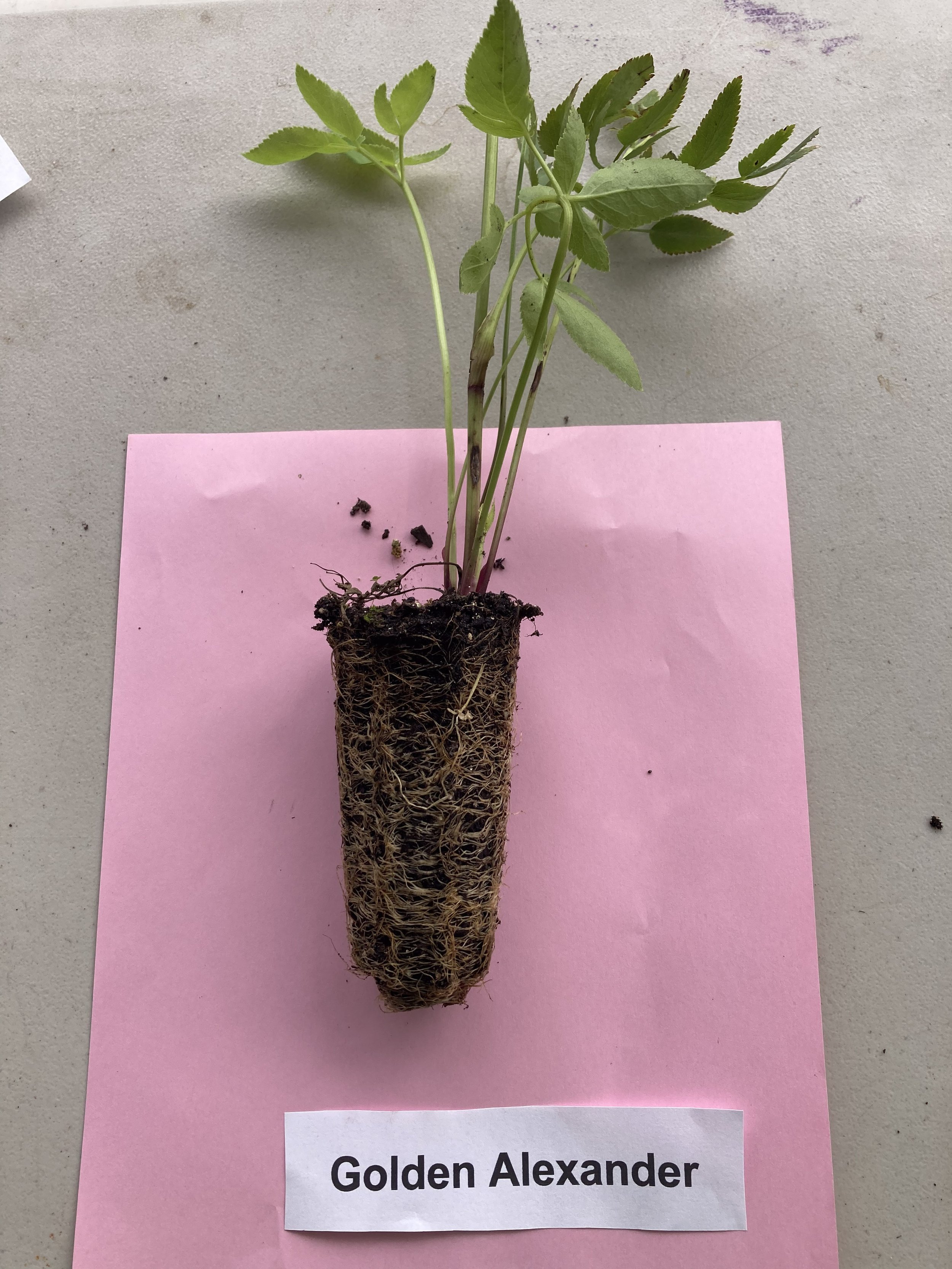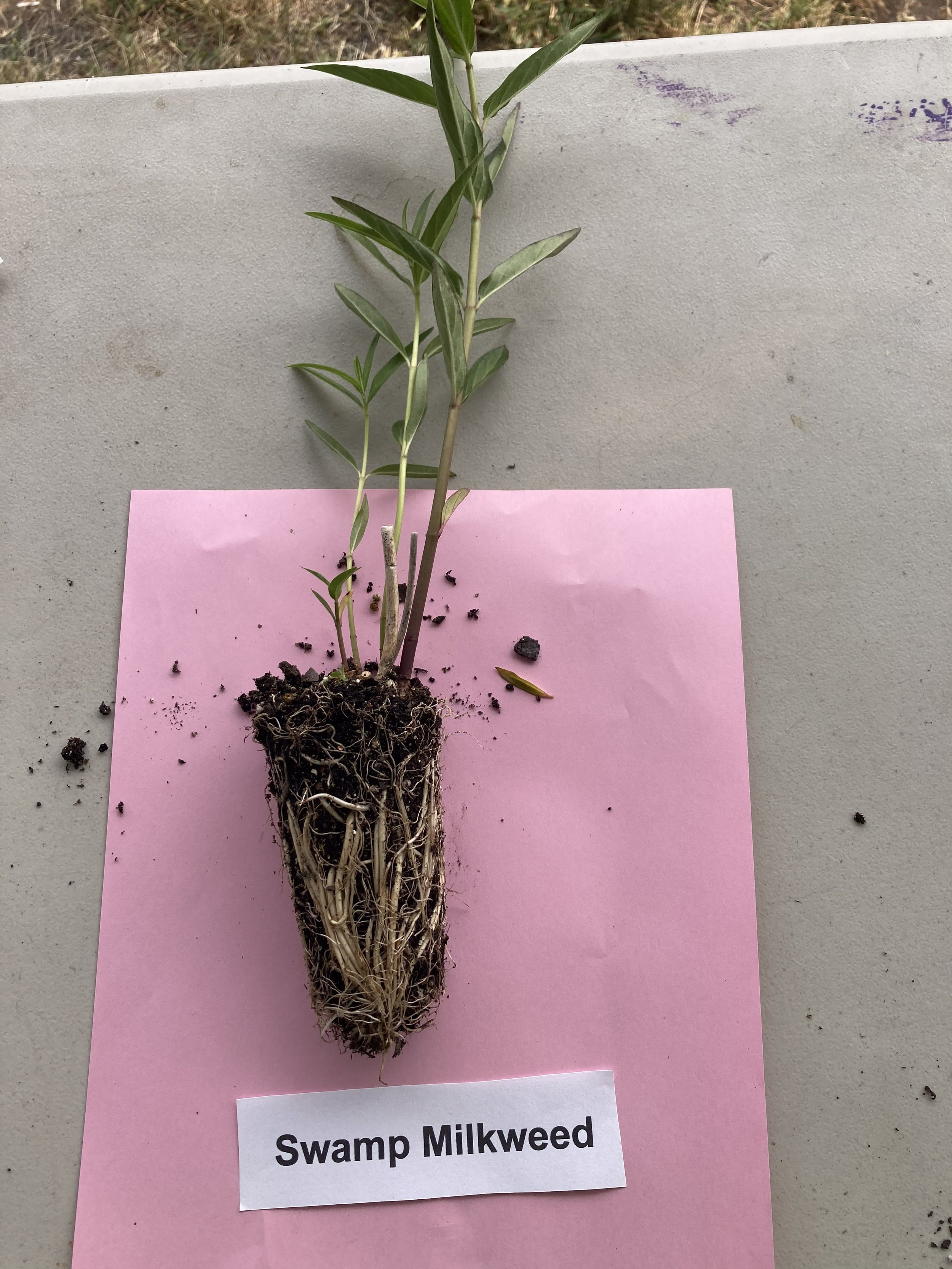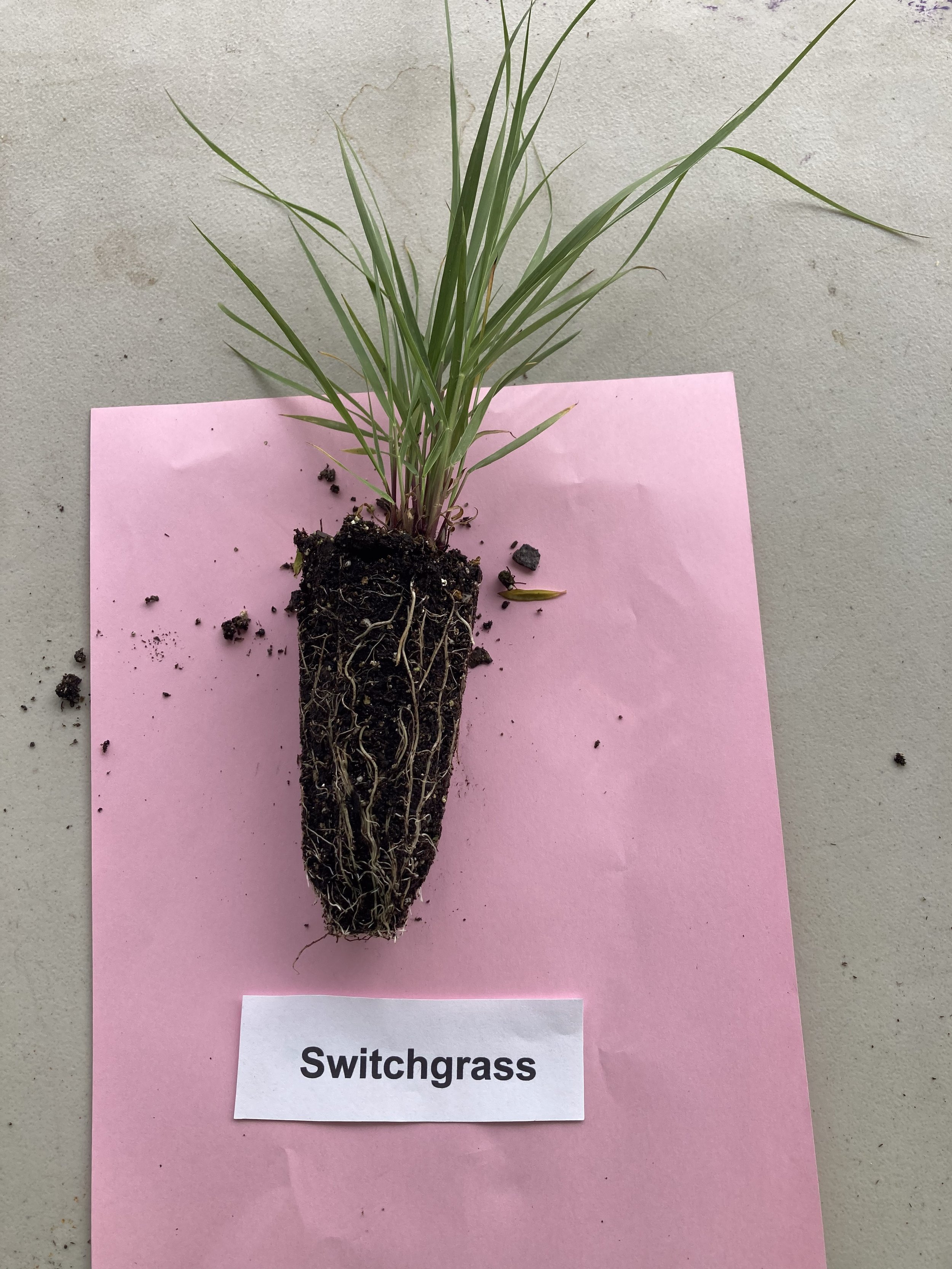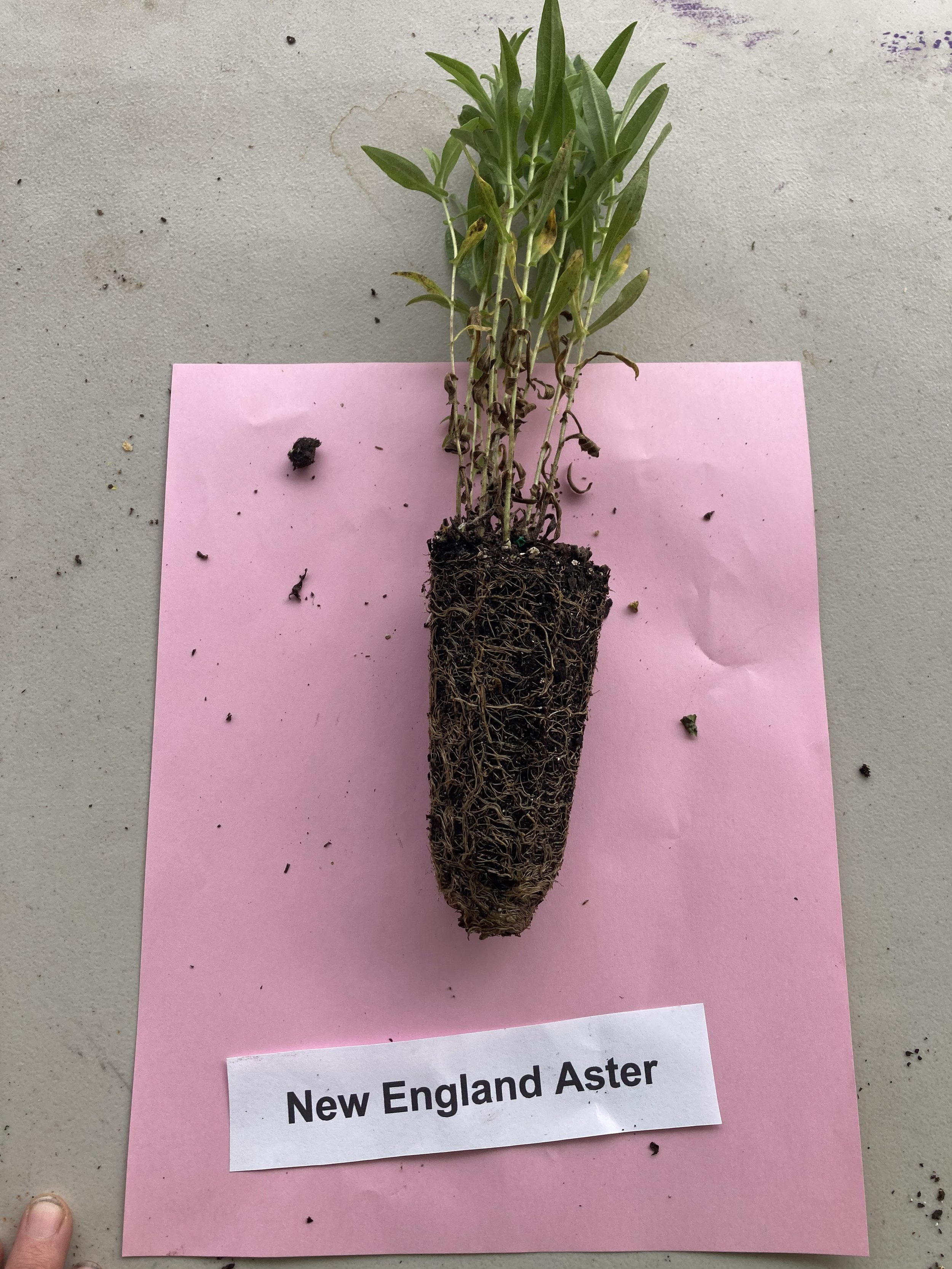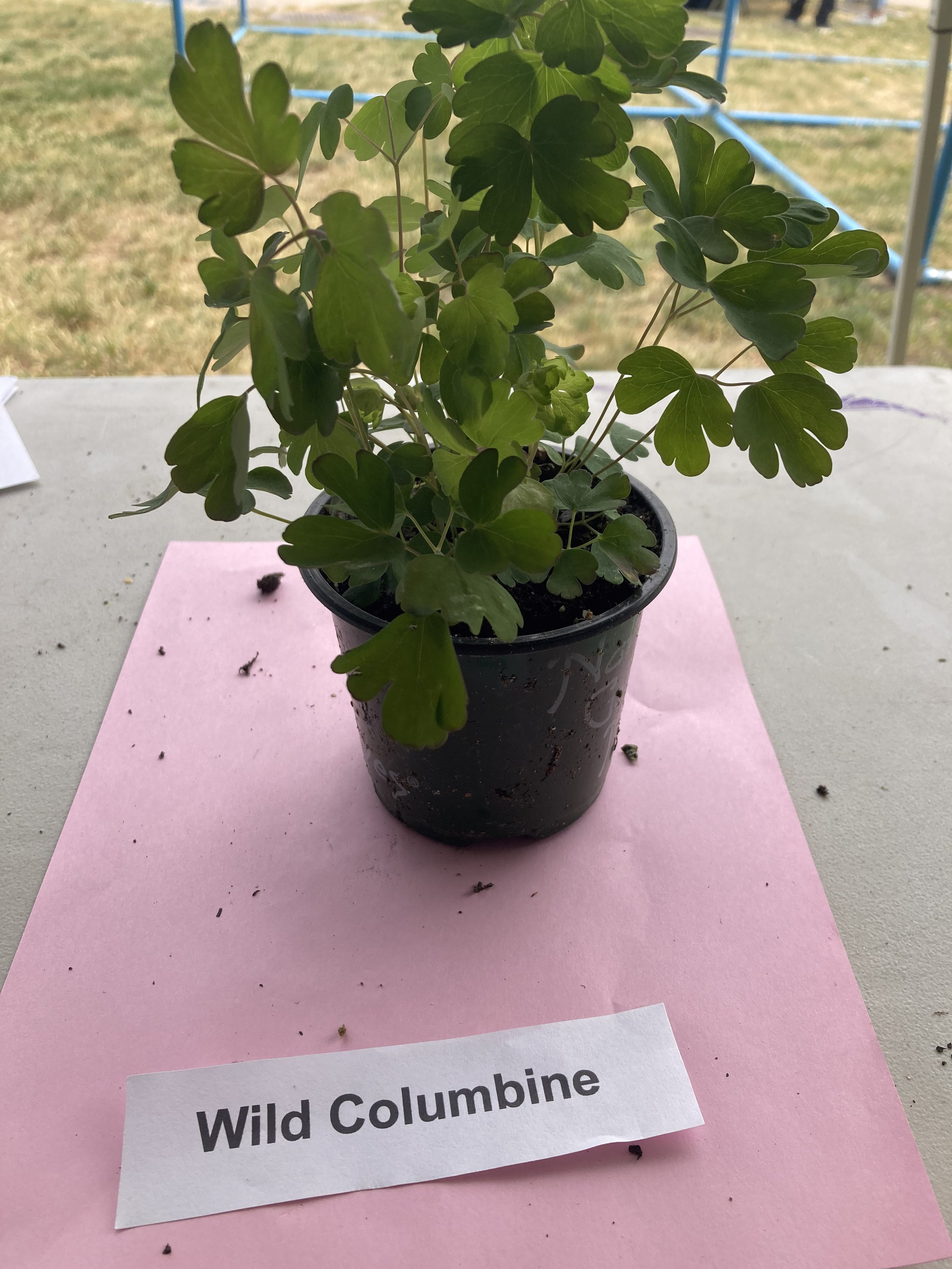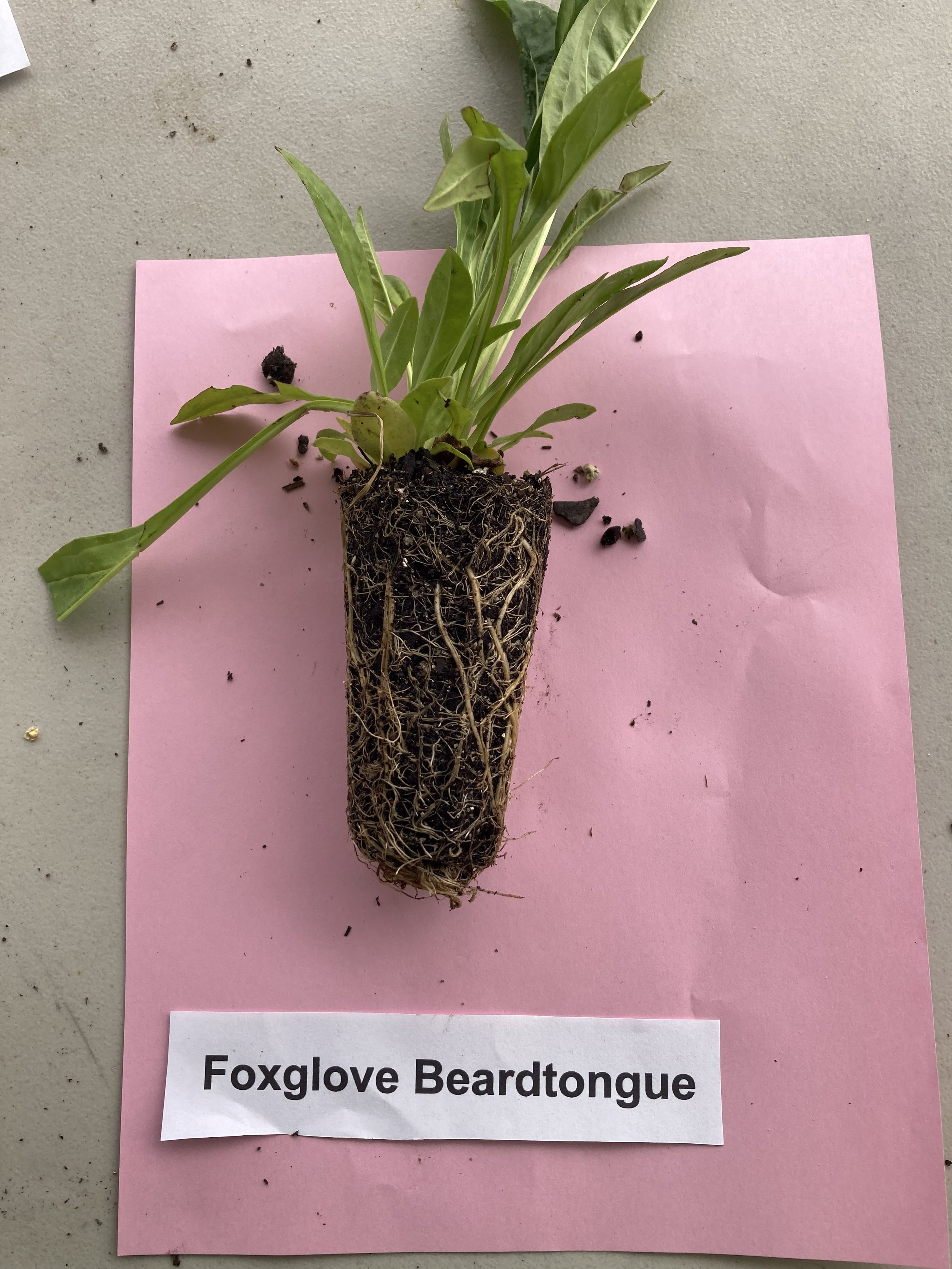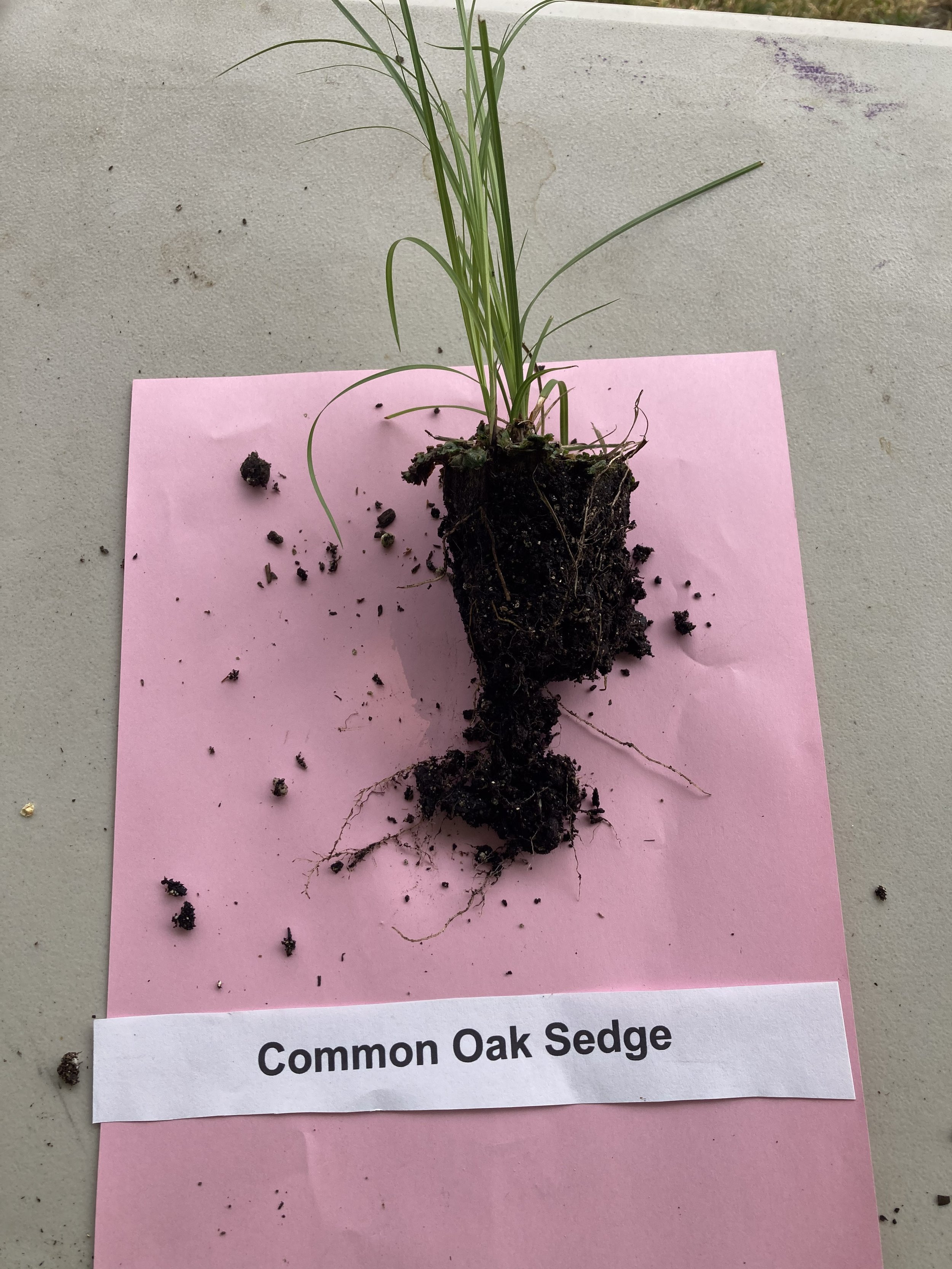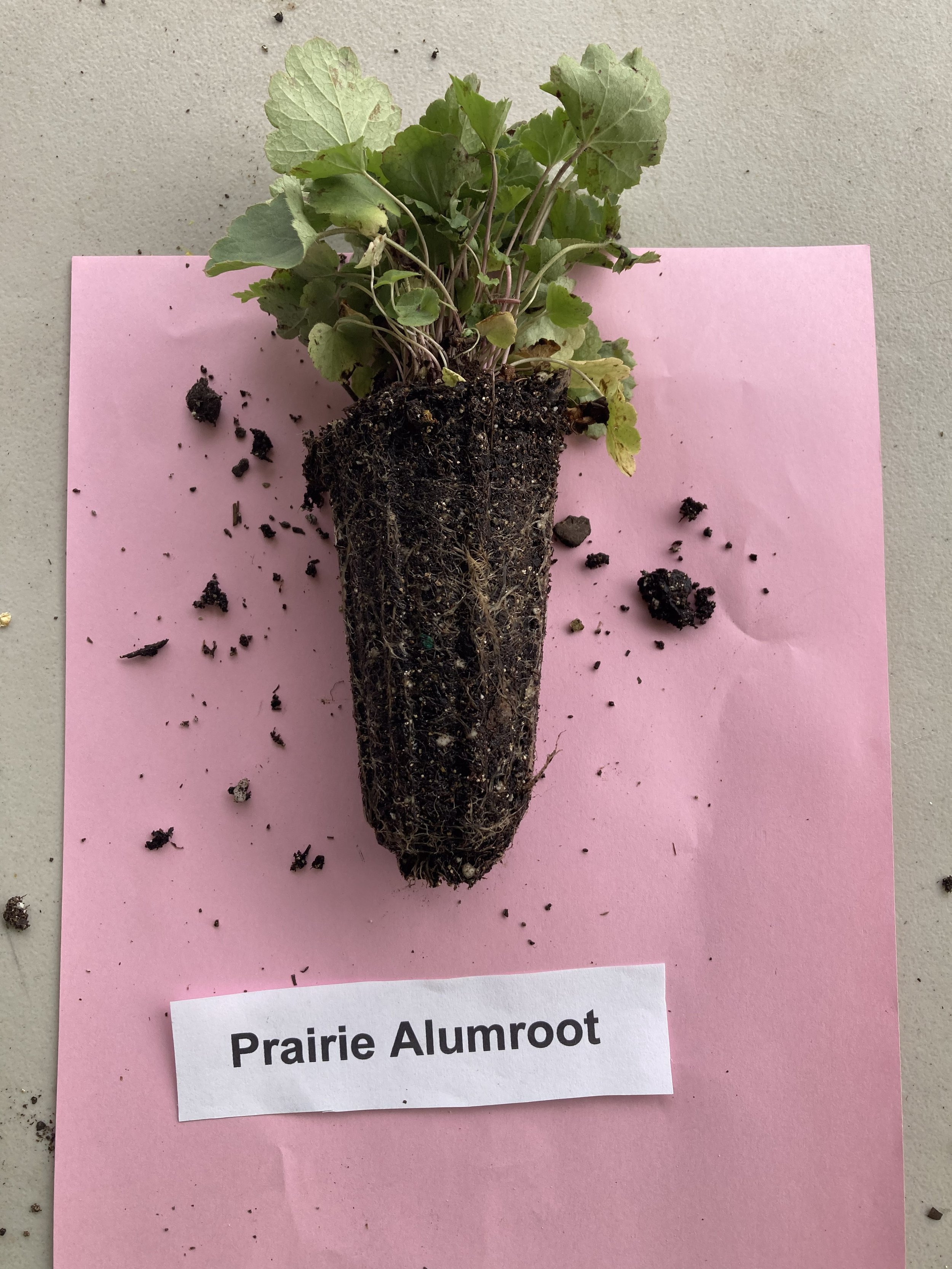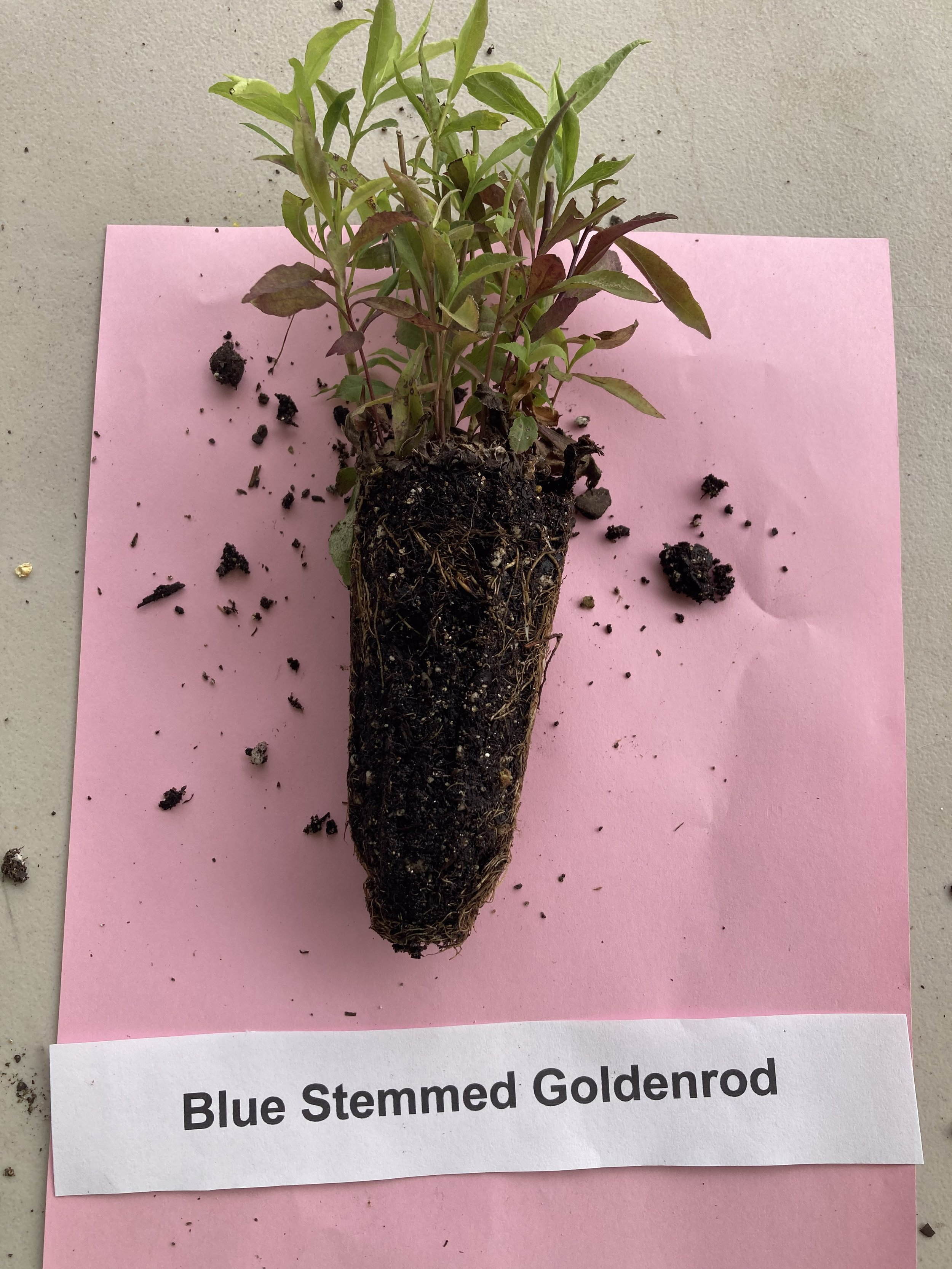Plant Pick Ups
Pick up for all plant kits will be on May 24th 12-4pm.
NOTE: due to the traffic circle construction, pick ups will NOT be at Comfort Station! We have a site in Palmer Square at 3101 W Palmer Sq.
FAQ’s
How big will the individual plants be when I pick them up?
The plants come as "plugs," which have root systems and are ready to go into your garden. They will have about 3 inches of roots/soil and the height of foliage depends upon each plant, but the average is 6 inches. Taller plants will likely have more foliage. Keep in mind a lot of native plants do not bloom in their first year.
How big is each kit? How heavy are they? Do I need to bring anything to transport them?
Each kit will have a specified number of plants- refer to each kit for the exact number. You can fit one kit in a large plastic bag or a box. Keep in mind that they are in soil and may have been watered recently so plan for dirt.
How do I know which kit is right for me? If my yard doesn't always get full sun should I get the partial shade kit? Will plants in the partial shade kit die if they get too much sun?
All of these plants can tolerate up to 6 hours of direct sun. You will have to water them a bit more, but they will be fine with some full sun...as well as some partial shade.
How do I plant the seedlings in my kit? How far apart should I plant them?
We recommend planting densely at 1–2 feet apart. This allows the plants to socialize and support each other (especially with their root systems) as well as to outcompete weeds.
How quickly do I need to get them in the ground?
We recommend planting the plugs within 2 weeks of picking up the plants. Keep them watered and make sure if you're not getting them immediately in the ground that they are in an appropriate location for the type of plant.
How much will the plants grow in the first year?
Native plants will grow slow and steady the first two years and then really "take off" by year three. Expect your natives to be relatively small the first year and then be fully established and reproducing through flowers and seeds by year three.
Can I pick up my plants another time other than May 24th from 12-4pm
Unfortunately we don’t have the capacity to store the plants for pickups outside this window of time! But you can message us ahead of time if you’d like to have a friend or neighbor pick up your kit on your behalf
Individual Plant Descriptions
Spring Forbs:
Prairie Alumroot (Heuchera richardsonii) 2' tall, 2' wide; blooms May-July ; mounded basal rosette of curly-edged foliage; the leaves are quite hairy on their undersides. Juvenile plants may exhibit some variegation with either white or red-tinged hues. Flowering stalks rise from the center of each clump, often reaching 2 feet tall – sometimes 3’ – before setting blooms. (partial shade, medium, clay/loam)
Wild Columbine (Aquilegia canadensis) 2' tall, 1' spread; blooms April–June; native spring wildflower with red, yellow flowers that attract hummingbirds (partial/shade, medium, loam)
Wild Geranium (Geranium maculatum) 2' tall, 1' spread; blooms April–June; lavender to soft pink flowers and deep red fall color; forms patches that bees and butterflies can’t resist (partial/shade, medium, loam)
Golden Alexander (Zizia aurea) 2' tall, 2' spread; blooms May–June; bright clusters of yellow flowers in spring; food plant for swallowtail butterfly (partial/shade, medium/moist/wet, clay/loam)
Summer Forbs:
Culver’s Root (Veronicastrum virginicum): 3–6' tall, 4' wide; blooms July–September; well-defined clean lines and strong vertical statement in the garden. The tall unbranched stems are surrounded with whorls of deep green leaves and topped with elegant spires of white flowers, blooming for several weeks in midsummer. (partial shade, medium/moist, clay/loam)
Blue False Indigo (Baptisia australis) 4' tall, 4' spread; blooms June–July; nitrogen fixing bush-like perennial with blue flowers on upright spikes; oblong seed pods make beautiful sounds in the fall/winter (sun/partial, medium, clay/loam)
Foxglove Beardtongue: (Penstemon digitalis) 2´–3´tall, 1.5´spread; blooms June–July; white color; also known as Smooth Penstemon, the flowers are great for long-tongued insects (sun/partial, medium/moist, clay/loam)
Butterfly Weed (Asclepias tuberosa) 2' tall, 2' spread; blooms June–August; orange native milkweed that is food source for Monarch caterpillars (sun, medium, loam)
Common Yarrow (Achillea millefolium): 2' tall, 2' wide; blooms June–September; flat-topped clusters of small, whitish flowers grow at the top of a gray-green, leafy, usually hair, stem; used to treat inflammation, pain and gastrointestinal disorders
Swamp Milkweed: (Asclepias incarnata) 3´–4´tall, 2´ spread; blooms July–August; pink color; food source and host plant for monarchs (sun, moist/wet, clay/loam)
Prairie Blazing Star: (Liatris pycnostachya) 3´tall, 1´spread; blooms July–August; pink/purple color; iconic prairie flower with tightly bunched blooms (sun, medium/moist, clay/loam)
Purple Coneflower (Echinacea purpurea) 4´tall, 2´spread; blooms July–Sept.; lavender color; showy daisy-like flowers that bloom in early summer and are a favorite nectar source for pollinators. Later in summer the large seed heads attract Goldfinches and other birds. (sun/partial, medium, clay/loam)
Cardinal Flower (Lobelia cardinalis) 4' tall, 1.5' spread; blooms July–Sept.; tall red flowering spikes; a favorite of hummingbirds (sun/partial, moist/wet, loam)
Hoary Vervain (Verbena stricta): 5' tall, 2' wide; blooms July–September; small, tubular, blue-violet flowers bloom from the bottom up in July's heat. The numerous crowning spikes of blossoms give a candelabra-like appearance to this graceful plant
Sweet Joe Pye Weed (Eutrochium purpureum) 6' tall, 3' spread; blooms July–Sept.; tall native perennial with mauve pink flowers that are highly attractive to pollinators (partial/shade, medium, clay/loam)
Wild Bergamot (Monarda fistulosa): 5' tall, 2' wide; blooms July–September; fragrant lavender flowers are a popular nectar source for pollinators and attract a wide variety of bees and butterflies. The distinctly aromatic leaves are commonly used to make tea, and the button seed heads are popular in dried floral arrangements (sun/partial, medium, clay/loam)
Boneset (Eupatorium perfoliatum): 4'–6' tall, 3' spread; blooms July–September; used by Native Americans to induce heavy sweating to break fevers; thought to help set broken bones (sun/partial, medium, clay/loam)
Fall Forbs:
Black-eyed Susan: (Rudbeckia hirta) 2´–3´tall, 1.5´spread; blooms June–October; long-lasting, yellow flowers and shiny deep green foliage (sun/partial, medium, clay/loam)
Blue-Stemmed Goldenrod (Solidago caesia): 2' tall, 1' wide; blooms August–September; graceful arching stems covered with hundreds of small yellow flowers. The distinct stems are purplish in color (shade/partial shade, medium, clay/loam)
New England Aster: (Symphyotrichum novae-angliae) 4´–6´tall, 2´spread; blooms August–October; purple/blue color; critical late-season pollinator; good cut flower (sun, medium, clay/loam)
Aromatic Aster (Symphyotrichum oblongifolium) 2' tall, 2' spread; blooms August–Oct..; aromatic foliage with lavender flowers that bloom in fall; important late-season pollinator food source (sun, medium, loam)
Showy Goldenrod (Solidago speciosa) 5' tall, 3' spread; blooms September–Nov.; yellow; one of the showiest of the Goldenrods; essential plant for late season pollinators (sun, medium, loam)
Grasses and Sedges:
Prairie Dropseed (Sporobolus heterolepis) 2' tall, 2' spread; blooms August–October; clump-forming native grass that smells like coriander/popcorn and turns golden orange in fall; seeds are a great food source for birds in fall (sun, medium, loam)
Switchgrass (Panicum virgatum): 3'–6' tall, 3' spread; grows well in any soil, stiff stems that stand up over the winter better than all other grasses. Features medium green leaves which turn yellow (sometimes with orange tints) in autumn, fading to tan-beige in winter (sun, medium, clay/loam)
Common Oak Sedge (Carex pensylvanica): 1' tall, 2' wide; blooms April–June; Common Oak Sedge has fine textured leaves and a creeping habit. It grows actively in spring and fall when soil temperatures are cooler. Planted one foot on center, it fills-in to form a dense low growing turf that doesn't need mowing (shade/partial shade, medium/dry, clay/loam)
Plant Kits
Full Sun Pollinator -
Baptisia alba :White False Indigo
Verbena stricta: Hoary Vervain
Solidago speciosa: Showy Goldenrod
Asclepias tuberosa: Butterfly Weed
Symph.oblongifolium: Aromatic Aster
Liatris pycnostachya:PrairieBlazingstar
Sporoheterolepis: Prairie Dropseed
Full Shade Pollinator-
Geranium maculatum:Wild Geranium
Aquilegia canadensis: Wild Columbine
Zizia aurea: Golden Alexander
Heuchera richardsonii: Prairie Alumroot
Veronicastrum virginicum: Culver’s Root
Solidago caesia: BlueStemmed Goldenrod
Carex pensylvanica: Common Oak Sedge
Partial Shade Pollinator
Eutrochium purpureum:
Echinacea purpurea: Purple Coneflower
Rudbeckia hirta: Black-Eyed Susan
Penstemon digitalis: Foxglove Beardtongue
Zizia aurea: Golden Alexander
Geranium maculatum: Wild Geranium
Aquilegia canadensis: Wild Columbine
Full Sun/Partial Shade Rain Garden
Panicum virgatum: Switchgrass
Symphnovae-angliae: New England Aster
Lobelia cardinalis: Cardinal Flower
Asclepias incarnata: Swamp Milkweed
Penstemon digitalis: FoxgloveBeardtongue
Zizia aurea: Golden Alexander
Rudbeckia hirta: Black-Eyed Susan
Eutrochr... Purpureum: SweetJoePye Weed
*some kits may have substitutions including the following species, based on the health and condition of the crops coming in. We work with our grower directly to get you the best quality plants that are as close to original as possible!



